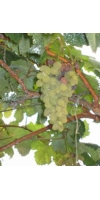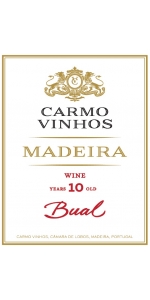Bual

Bual is the English term named after the Portuguese Boal grape. The white wine grape variety refers to a handful of grapes, but it typically refers to the Bual de Madeira grape type. Bual wines are typically sweet wines that are produced from large and sweet grapes. The heaviness and flavor of the Bual grapes make them delicious table grapes. The taste of these grapes is similar to the Sercial variety. The bual grape type is a great place to start if one is trying Madeira wines for the first time. Bual wine is typically aromatic, but is not too sweet. This wine has hints of acidity, which helps balance the sweetness of it. Although it is one of the darkest, if not the darkest of all wines from Madeira, the type is certainly not overpowering and is very palatable. Madeira wines from the Bual variety are usually not as sweet as wine crafted from the Malmsey grape type, but it is sweeter than other grape types. The hints of caramel, apricot, orange, and dried fruits lend Bual a distinct taste. The Bual vines typically grow in regions of Spain and Portugal, but the regions tend to use the variety for fortified wines.
Carmo Vinhos Madeira Bual 10 Yr has depth, medium body, acidity and sweetness. Lively and full with delicious flavors of caramel and toffee and a lasting aftertaste. Delicious as a dessert wine. This wine demonstrates the perfection of the blender's art and is to be savored.
- back
Selected Options
Grape Types
Categories
Pricing
Countries
Regions
Grape Types
Wineries
Organic/Free Shipping
All older vintage wines have been purchased from a single collectors cellar. Pictures can be requested before shipment.
Gambellara Soave I Basalti is made from 100 percent Garganega
Soave DOC (Denominazione di Origine Controllata)
Production area: Soave hills
Vineyard training system: Open pergola
Vinification: Destemming, maceration of the grapes in the must for 12 hours, racking and long fermentation at 18 °C
The color is a brilliant straw yellow with a fresh fruit perfumes, especially apple and pear, and floral notes such as elder and bloom. The taste is very fresh and light, with a very interesting acidity. There is an important presence of mineral salts due to the volcanic origin of the soil. Ideal as aperitif, light main courses such as pasta and risotto, shell fish and fish, soups and vegetables.





